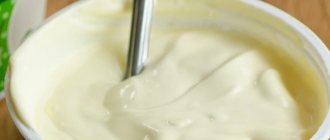What is the best way to store it?
The shelf life of olive oil depends on the container in which the extract is purchased. On the market you can find the product in glass, plastic or stainless steel.
Olive oil in glass can be stored the longest - up to 2 years, but provided that the container has not been opened. The main advantage is the density of the walls, which do not allow light to pass through, which causes rapid oxidation of fats.
It is possible to keep the product in a tin can, but after breaking the seal, it is recommended to pour the liquid into a glass container to prevent acceleration of oxidation processes. If this is not possible, it is better to buy a small volume. Also, tin containers are inconvenient to use.
Oil cannot be stored in plastic containers - the container allows sunlight to pass through and causes premature rancidity. Typically, mixtures of olive and other oils - sunflower, rapeseed, soybean - are poured into plastic. This product is not useful and is not recommended for purchase.
The best option is a bottle made of thick dark glass, with a tight lid that prevents contact with air and sun.
Reasons why oil spoils
Manufacturers prefer not to keep the product in warehouses for a long time: if closed, the seasoning loses its nutritional value after a couple of years.
At home, the liquid will quickly become unusable if the storage conditions are violated if:
- the container is always on the kitchen table (window sill);
- containers are often left open;
- Plastic bottles are used for storage.
Important! If the container is larger than the volume of the contents, the void is filled with air. An oxidation reaction begins, reducing the shelf life of the oil.
Tin containers do not provide a good seal: adhering liquid prevents the lid from fitting tightly. The slightest crack is enough for air to seep inside.
Read more ► Shelf life of sunflower oil, how to store it correctly
When keeping a product open, quality is affected not only by contact with oxygen. Provencal seasoning absorbs surrounding odors, losing its own aroma.
Where to store
The next step is choosing the right storage space. It is characterized by the following features:
- Dark, protected from natural light (although artificial light is also harmful to fatty acids).
- Temperature - 12-16C, minimum - 2-3C, maximum - 20-25C.
- Humidity is low.
Can olive oil be stored in the refrigerator?
The answer is yes, but it will not extend its shelf life. On the contrary, prolonged exposure to low temperatures negatively affects the effectiveness of the positive effect of the product on the body.
Fatty acids crystallize at fairly high temperatures - 2-5C, so white flakes appear in the bottle and the color changes (to white, with a yellowish or greenish tint). This is a normal physical process. The same thing happens with freezing (freezing temperature). The extract becomes liquid at room temperature and is quickly absorbed into the skin.
Some try to focus on whether the product freezes in the refrigerator or not. But such an experiment will not determine quality, and freezing can damage important organic compounds, which will again reduce consumption.
The best option is to put the extract on a dark cabinet shelf or in a pantry. If kept in the refrigerator, then no more than 2 months.
We recommend reading: “The subtleties of choosing and using olive oil.”
Criteria for a quality product
The choice of oil depends on the purpose of its use in cooking .
For fresh consumption, use a product marked Extra Virgin. This means that no chemicals were used to purify the raw materials during its production. The product is produced from fresh olives using manual or mechanical crushing. Its smell is bright, rich, with fruity, tomato, herbal and even almond notes . Color varies from golden yellow to green. The variety of olives and the time of their harvest affect the shade of the product. The taste is bitter, slightly spicy. This oil is used to season salads, vegetable, fish and meat dishes, and soups.
For frying, use a product marked Refined olive oil . It undergoes repeated processing - refining - and is inferior in taste and beneficial properties to virgin oil. However, when heated to 220°C, it does not release carcinogens, since it does not contain phospholipids that are prone to oxidation. The aroma is weak, the color is golden, the taste is mild.
Some manufacturers mix Extra Virgin with Refined olive oil . This product is used for preparing fried, baked and stewed dishes. The composition of the product is indicated on the label and marked Virgin Olive Oil.
Pomace Olive oil made from pomace is on sale . The residues after pressing Extra Virgin are subjected to thermal and chemical treatment, after which no taste, odor, or nutrients remain in the oil. It is easy to understand which oil is in front of you based on the cost and composition indicated on the label. There is no benefit to the body from consuming such a product.
Advice. Place the bottle in the refrigerator for 15 minutes. Sediment and flakes indicate that the product has become thicker, which means you have high-quality oil.
Quality criteria:
- Acidity . It indicates the percentage of fatty acids. The lower it is, the better the product. For Extra Virgin it is 0.8%, for Virgin Olive Oil it is no more than 2%.
- Smell and taste . Tasting allows you to evaluate these qualities. The main indicator of product quality is a bitter aftertaste and a slight sore throat. The aroma should be rich and bright.
- Texture . Real virgin oil is thick and viscous, and when rubbed into the skin, it is quickly absorbed, despite its fat content.
- Information on the label . It indicates the country of origin and location of the spill (ideally they should match), the date of production, full details of the importing company with address and contact phone number. The IGP designation indicates that the collection and pressing were carried out in countries with strict product quality control procedures (Spain, Italy and Greece), but the purification and bottling took place in other countries. The DOP mark means that the oil has gone through all stages of production in one place.
How to recognize a low-quality product
Extra virgin olive oil oxidizes quickly and is the most expensive to produce . To reduce costs, unscrupulous manufacturers use a trick - they mix it with refined olive, sunflower, and rapeseed, which is why the final product does not have a pronounced aroma and is stored for more than 1 year.
A low-quality product is indicated by a rancid, sour smell, lack of slight bitterness and low price.
Interesting fact! Residents of hot countries use olive oil to protect their skin from ultraviolet radiation - mix it with lime juice and rub it on the body and face.
We check the quality according to the label
The success of product storage is determined already at the purchase stage. When looking at the assortment of store shelves, you need to:
- study the label - check the expiration date, make sure that the manufacturer and packer of the product are in the same country;
- determine the usefulness - it is advisable to take a bottle of cold-pressed oil, since such a product contains the maximum amount of useful substances;
- pay attention to the container - it is important that the container in which the oil is sold is made of thick, dark glass; you can also purchase the product in a tin container.
Consumption time
The standard shelf life of olive oil after opening is one month. Further, depending on the manufacturer, the product may retain its benefits for another 1-2 weeks, or may deteriorate.
Many manufacturers indicate that unopened oil can be stored for 2 years, but during this period the substance remains safe, although it loses its beneficial properties. You should not stock up on the product; one bottle costs 9-12 months. How much benefit remains in it during this time depends on the container and storage conditions.
It is important to pay attention to the indicated harvest date.
A quality product - made immediately after the olives are harvested.
If raw materials are not processed within 3-5 days, they will ferment and lose their benefits. Another defect after long-term storage of olives is the appearance of mold. A product made from such raw materials becomes harmful for consumption.
Oxidized raw materials are the most dangerous. In this case, the olive extract looks normal, but the smell is sharp, uncharacteristic, and unpleasant. The taste is sour or bitter.
We recommend reading: “Is olive oil bitter - is it normal or not?”
How to properly store olive oil after opening
Basic Rules:
- Keep in a dark glass bottle that is hermetically sealed. If there are gaps that allow contact with air, you will need to either change the container or additionally secure the neck with a piece of fabric, adhesive tape, etc.
- Do not store near stove, oven or other heat sources. Avoid exposure to sunlight.
- Use within 30 days after opening.
- The product must not be stored in plastic.
- After use, the cap should be screwed on tightly immediately to prevent oxidation.
- It is not recommended to put the product in the refrigerator; olive oil freezes quickly, and changing the temperature conditions negatively affects the properties.
Knowing where and how to store olive oil, you can use a quality product for a month, receiving a set of necessary substances.
Places of Containment: Habits and Smart Choices
When choosing a place to store olive oil, you need to take into account the presence of coolness and darkness:
- A kitchen cabinet located away from heating appliances and without a glass door is an ideal place to store olive oil at home. Because this oil product does not tolerate heat and cold.
- Often, out of habit, the bottle is placed on the stand of the refrigerator door, believing that storing olive oil in the refrigerator is correct. However, the refrigerator environment affects it in such a way that the molecular composition of olive products changes. In a cold atmosphere, this is manifested by its thickening and sediment resembling white flakes. Such oil will lose its usefulness, but it can be used for cooking. Of course, the usual way of storing it in the refrigerator is not the best way.
- Can the product be stored in the freezer? No, because spruce does not tolerate frost at all. When frozen, everything deteriorates: structure, taste, color and smell.
- Another common habit is to keep olive products on hand - above or near the stove. This very quickly leads to its spoilage and the appearance of a bitter taste. Therefore, storing it like this is not an option at all!
How to tell if the oil has gone bad
There is a lot of cheap product on store shelves that has become rancid or musty, which consumers are accustomed to, considering this normal.
The defining features of expiration are taste and aroma.
If you feel tartness or slight sourness when tasting, this oil is dangerous to eat.
A slight bitterness is the norm for a fresh extract, but a pronounced unpleasant aftertaste indicates spoilage.
The odor indicating a delay is similar to the following:
- Plasticine, pencil lead.
- Stale linen.
- Vinegar or alcohol.
- Nail polish.
Another sign is excessive fat content in the oil.
It is slowly absorbed into the skin, the consistency is unpleasant upon contact. This product cannot be used even for cosmetic purposes.
You should not consume olive extract after the expiration date: signs may indicate moldiness of the olives during processing or oxidation of the oil, which will negatively affect the digestive system or affect metabolism.
Sediment in olive oil is taken as a sign of poor quality raw materials, but this is a characteristic feature of the cold-pressed product.
How to use expired olive oil, especially if it has spoiled prematurely?
If a short period of time has passed after the expiration date, then the raw material is permitted for use for cosmetic purposes: for masks, lotions for feet, hands or hair. But you should not create facial products at home - they can clog pores and increase skin oiliness.
Another way is to use it for frying. But you should not expect benefits from such products. Expiration becomes an alternative to sunflower, but not any better.
It is completely safe to use oil as a lubricant for locks, hinges and other metal parts.
Package
Stores offer olive oil for sale in the following packaging:
- Bottles and carboys made of glass or plastic.
- Tin cans.
- Metal containers for large volumes.
- Ceramic and porcelain vessels.
In portions for daily use, it is better to pour the contents into a stainless container or a dark glass bottle. Opaque glass is the best material to store any amount of olive oil.
Olive gold can be stored in a tin container for up to a year, provided it is sealed tightly and rarely opened. However, being in a metal can, it comes into contact with metal. Gradually, a chemical reaction of oxidation occurs and the structure of unsaturated fatty acids is destroyed by the displaced hydrogen.
Large metal containers, as a rule, are specially treated with a protective layer against oxidation in order to store oil there for a long time.
Plastic packaging is especially harmful. An oily substance usually absorbs odors, and plastic, even if it is not felt, has the ability to emit foreign odors. It is harmful for storing any product for a long time, especially vegetable fats. In addition, good quality olive products are never sold in plastic packaging.
For daily use, special ceramic or porcelain containers are sold. It's very convenient to store there. They are environmentally friendly and perfectly preserve the benefits of vegetable oils.
Tip: if you only have a clear glass bottle or jug to store olive oil, you can wrap it in foil.










